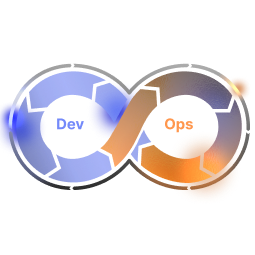Understanding the Meaning of DevOps


Key takeaway
Discover DevOps' meaning and explore its principles, benefits, and best practices for effective collaboration and automation.
Grasping the meaning of DevOps is crucial for organizations aiming to optimize their software development and IT operations. The definition of DevOps, a fusion of 'development' and 'operations,' is a cultural and professional paradigm that promotes collaboration between software developers and IT teams. By dismantling traditional barriers, DevOps encourages a more agile, efficient, and automated software delivery process. This article delves into the DevOps meaning, exploring its mechanisms, benefits, challenges in implementation, lifecycle, and best practices for successful adoption.
DevOps: What Does it Mean?
The meaning of DevOps is an innovative approach that merges development (Dev) and operations (Ops) to improve software delivery and operational efficiency. At its core, the definition of DevOps is built on principles of continuous integration, continuous delivery, and a collaborative culture. These principles aim to eliminate traditional divisions between development and operations teams, fostering an agile environment where software can be developed, tested, and deployed quickly.
Key elements of DevOps include automation, monitoring, and feedback loops. Automation minimizes repetitive tasks, allowing teams to concentrate on high-value activities, while continuous monitoring detects and resolves performance issues promptly. Feedback loops from automated testing and real user experiences provide crucial insights that drive iterative improvements in the software development lifecycle. Combined, these components create a strong framework that boosts productivity and enhances software quality.
Collaboration and communication are vital for successful DevOps practices. By working closely together, teams can remove barriers that often impede progress. Open communication channels promote shared responsibility and accountability, leading to rapid problem resolution and innovation. This collaborative culture empowers teams to respond to changes swiftly and effectively, ensuring that customer needs are met without delay. The devop meaning fosters an environment where continuous improvement is not just a goal but a core value, enabling organizations to excel in a competitive landscape.
Functionality of DevOps
The meaning of DevOps is a transformative strategy that integrates development and operations teams to boost collaboration and efficiency throughout the software development lifecycle. By removing traditional silos, organizations can nurture a culture of shared responsibility and continuous enhancement. This integration results in quicker problem resolution, increased deployment frequency, and improved service reliability.
A fundamental aspect of DevOps is Continuous Integration and Continuous Deployment (CI/CD). CI/CD practices enable developers to merge their code changes into a shared repository frequently. Automated tests are conducted to verify the new code, ensuring that bugs are detected early in the development process. Once validated, the code is automatically deployed to production, significantly reducing the time between development and deployment. This rapid feedback loop accelerates time-to-market and enhances the overall quality of software products.
Automation is crucial in streamlining DevOps processes. By automating repetitive tasks like testing, deployment, and infrastructure management, teams can focus on more strategic initiatives. Automation tools help maintain consistency across different environments, reducing human error and ensuring reliable application performance. With platforms like Harness, organizations can implement automation across their DevOps workflows, facilitating seamless integration and deployment. This not only saves time but also empowers teams to innovate and respond to market demands more effectively.
Advantages of Implementing DevOps
Adopting DevOps practices can radically transform how organizations approach software development and delivery. One of the most significant advantages is increased deployment frequency. With streamlined processes and automation, teams can release updates and new features more regularly. This not only keeps the product current and responsive to user needs but also reduces the risks associated with large, infrequent releases.
Enhanced collaboration and productivity is another hallmark of a successful DevOps implementation. By breaking down silos between development, operations, and other teams, organizations foster a culture of shared responsibility and transparency. This collaborative environment encourages open communication, leading to faster problem resolution and a more engaged workforce. As a result, teams can focus on innovation rather than being hindered by miscommunication or bottlenecks.
Additionally, adopting DevOps practices can result in a faster time to market and reduced failures. Continuous integration and continuous delivery (CI/CD) pipelines enable teams to test and validate their code rapidly, ensuring that any issues are identified and addressed early in the development process. This proactive approach accelerates feature delivery and enhances software quality, reducing the likelihood of production failures. With improved stability and reliability, businesses can gain a competitive edge in a constantly evolving market.
In summary, the benefits of adopting DevOps are clear: increased deployment frequency, improved collaboration and productivity, and a faster time to market with fewer failures. By leveraging these advantages, organizations can not only enhance their operational efficiency but also deliver greater value to their customers.
Overcoming DevOps Implementation Challenges
Implementing DevOps within an organization can be a transformative journey, yet it presents several challenges. One significant hurdle is cultural resistance and change management. Organizations often have established workflows and processes, and introducing DevOps can disrupt the status quo. Employees may fear that their roles will be diminished, leading to resistance against new practices. To address this, it’s crucial to foster a culture of collaboration and open communication, encouraging teams to embrace the benefits of DevOps, such as increased efficiency and improved product quality.
Another challenge is skill gaps and training needs. DevOps requires a unique blend of technical skills, including proficiency in automation tools, cloud computing, and CI/CD practices. Many teams may find themselves lacking the necessary expertise to implement DevOps effectively. Organizations should invest in training programs and workshops to upskill their workforce, ensuring that team members are equipped to handle the evolving demands of a DevOps environment.
Finally, managing legacy systems alongside DevOps practices poses a significant obstacle. Many organizations rely on outdated technology that may not integrate seamlessly with modern DevOps tools and processes. This can lead to inefficiencies and complicate the transition to a DevOps model. It is essential to develop a clear strategy for integrating legacy systems with new technologies, possibly phasing out older systems or adopting hybrid approaches that enable a smoother transition. By addressing these challenges, organizations can better position themselves for successful DevOps implementation and reap the benefits of enhanced collaboration and faster delivery cycles.
The DevOps Lifecycle Explained
The DevOps lifecycle is a vital framework that integrates development and operations teams to enhance the software delivery process. This lifecycle comprises several key phases that ensure continuous development, deployment, and monitoring of applications.
In the planning and coding phases, teams focus on defining project requirements and creating code. This initial stage is vital for aligning business goals with technical capabilities. During this phase, collaboration tools and version control systems are often employed to streamline communication and maintain code integrity. Effective planning lays the groundwork for a successful DevOps strategy, allowing teams to anticipate challenges and adapt their approach accordingly.
The building and testing stages follow, where the code is compiled into executable software. Automated testing tools play a significant role in this phase, enabling teams to conduct thorough tests to identify bugs and ensure quality. Continuous integration practices are implemented to facilitate quick feedback loops, allowing developers to make necessary adjustments rapidly. This agile approach not only accelerates the development process but also enhances the overall quality of the software.
Finally, the deployment and monitoring processes are critical for delivering the application to end-users. Deployment can be automated through various tools, ensuring that updates and new features are released seamlessly. Once the software is live, monitoring tools are employed to track performance, user feedback, and system health. This ongoing assessment allows teams to respond swiftly to any issues that arise, ensuring a reliable user experience.
In summary, the DevOps lifecycle is a dynamic and iterative process that fosters collaboration among teams, enhances software quality, and speeds up delivery. By understanding each phase, organizations can implement best practices that lead to a more efficient and effective software development cycle.
Best Practices for DevOps Success
DevOps is a transformative approach that unites development and operations teams to deliver high-quality software faster and more efficiently. To successfully adopt DevOps, organizations should focus on several best practices, starting with fostering a culture of collaboration. This involves breaking down silos between teams and encouraging open communication. When developers, operations staff, and other stakeholders work together towards a common goal, they can share insights and tackle challenges more effectively. Regular cross-functional meetings, collaborative tools, and a shared understanding of objectives can significantly enhance teamwork and innovation.
Another key practice is implementing automation effectively. Automation streamlines repetitive tasks, reduces the risk of human error, and accelerates the software delivery process. By automating testing, deployment, and infrastructure management, teams can focus on higher-level strategic initiatives. Tools such as Harness can help orchestrate these automated processes, ensuring that the deployment pipeline is efficient and reliable. When selecting automation tools, it’s essential to consider how they integrate with existing systems and workflows to maximize their benefits.
Lastly, monitoring and continuous feedback loops are crucial in a DevOps environment. Establishing robust monitoring systems allows teams to gain real-time insights into application performance and user experience. This data is invaluable for making informed decisions and iterating on software products. Continuous feedback loops ensure that development teams can quickly understand the impact of their changes and adapt accordingly. By creating a feedback-rich environment, organizations can foster a culture of continuous improvement, ultimately leading to better software products and satisfied customers.

